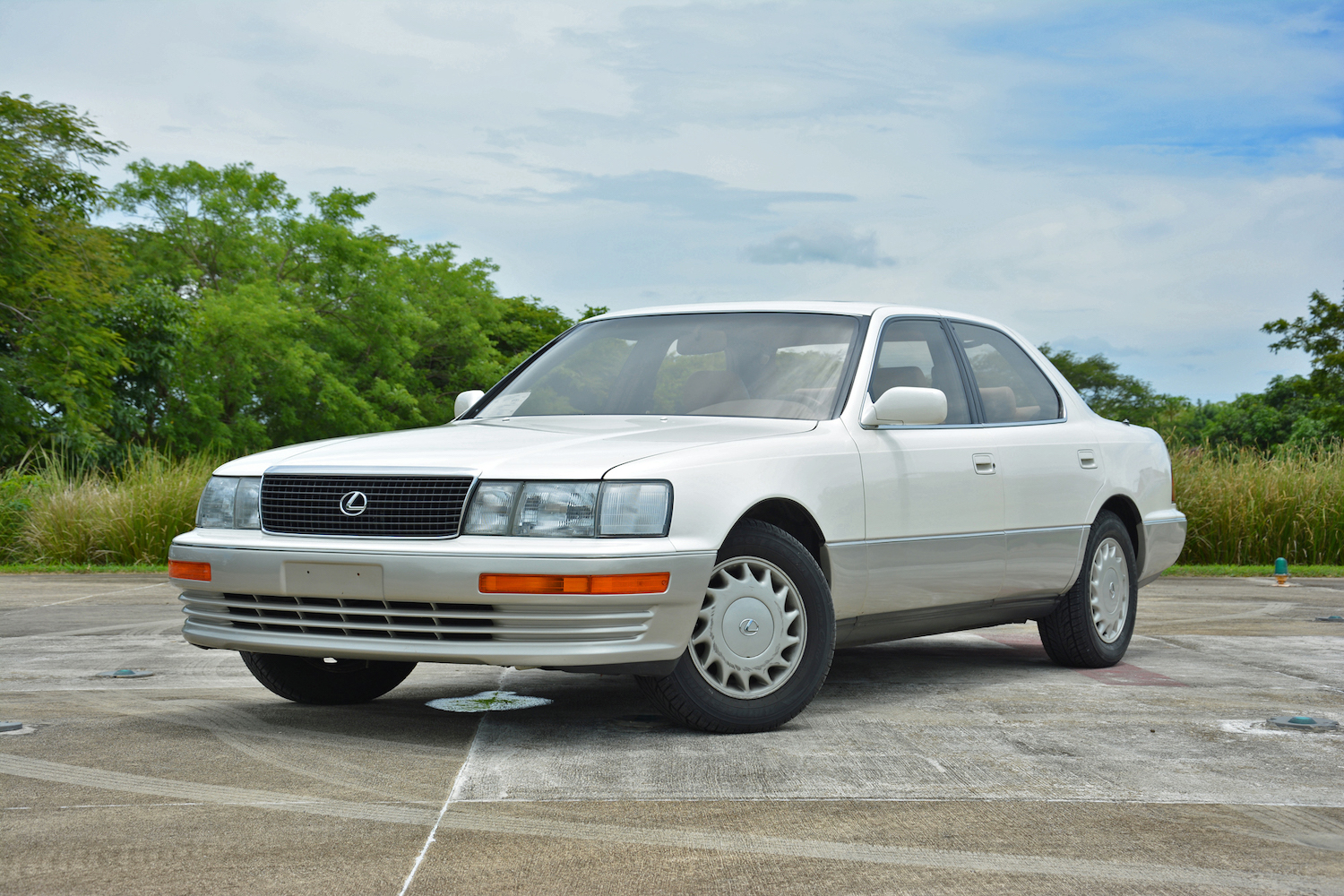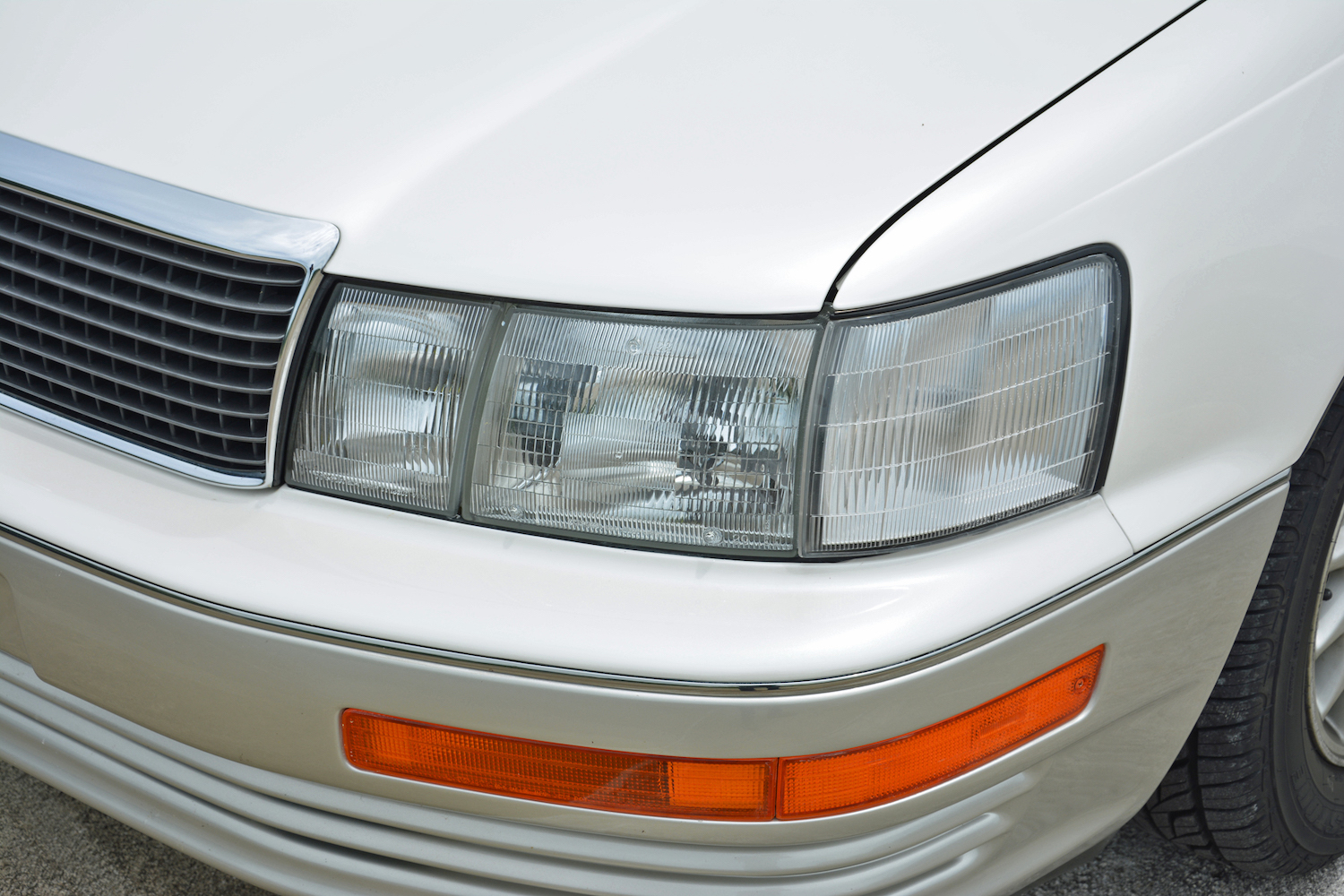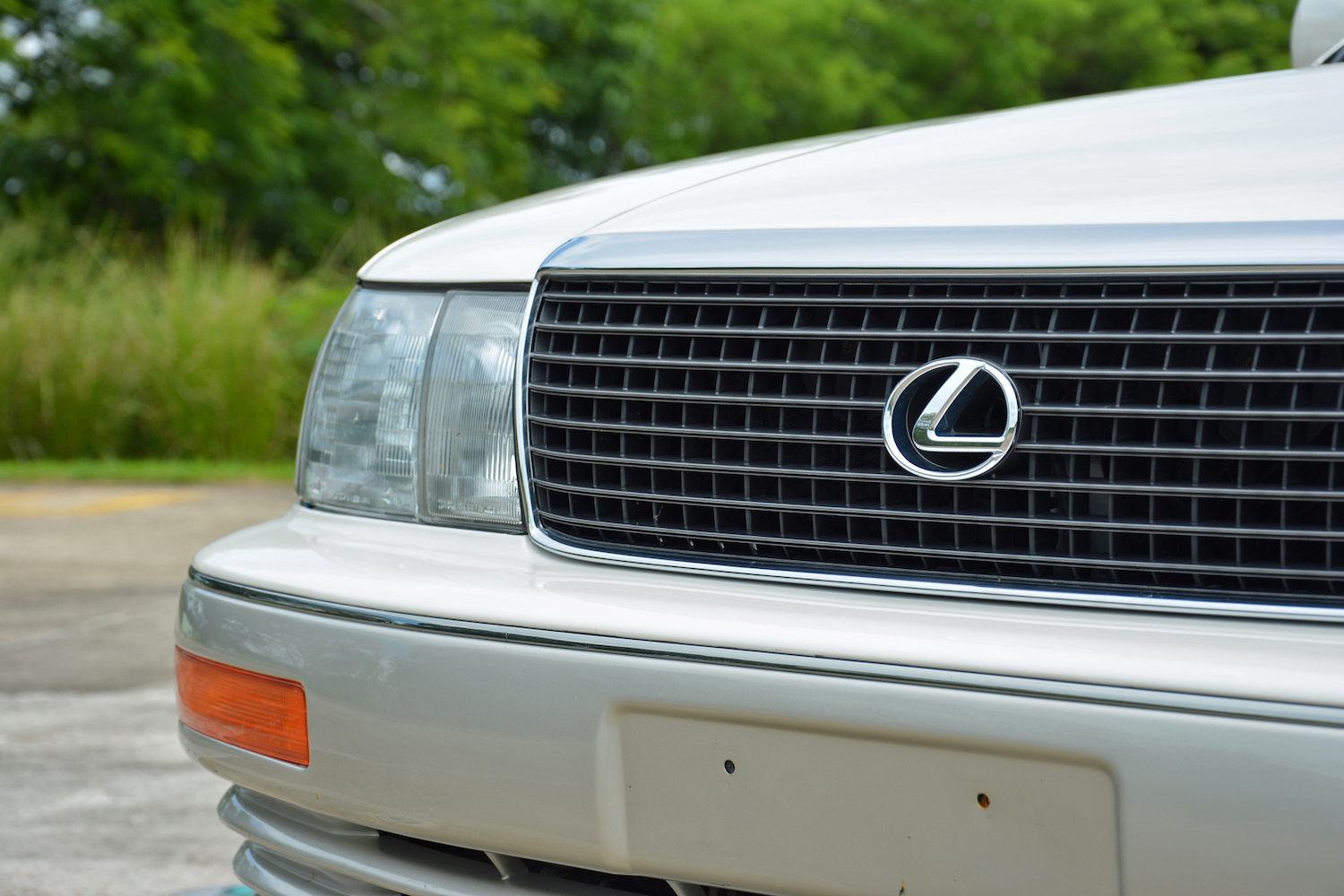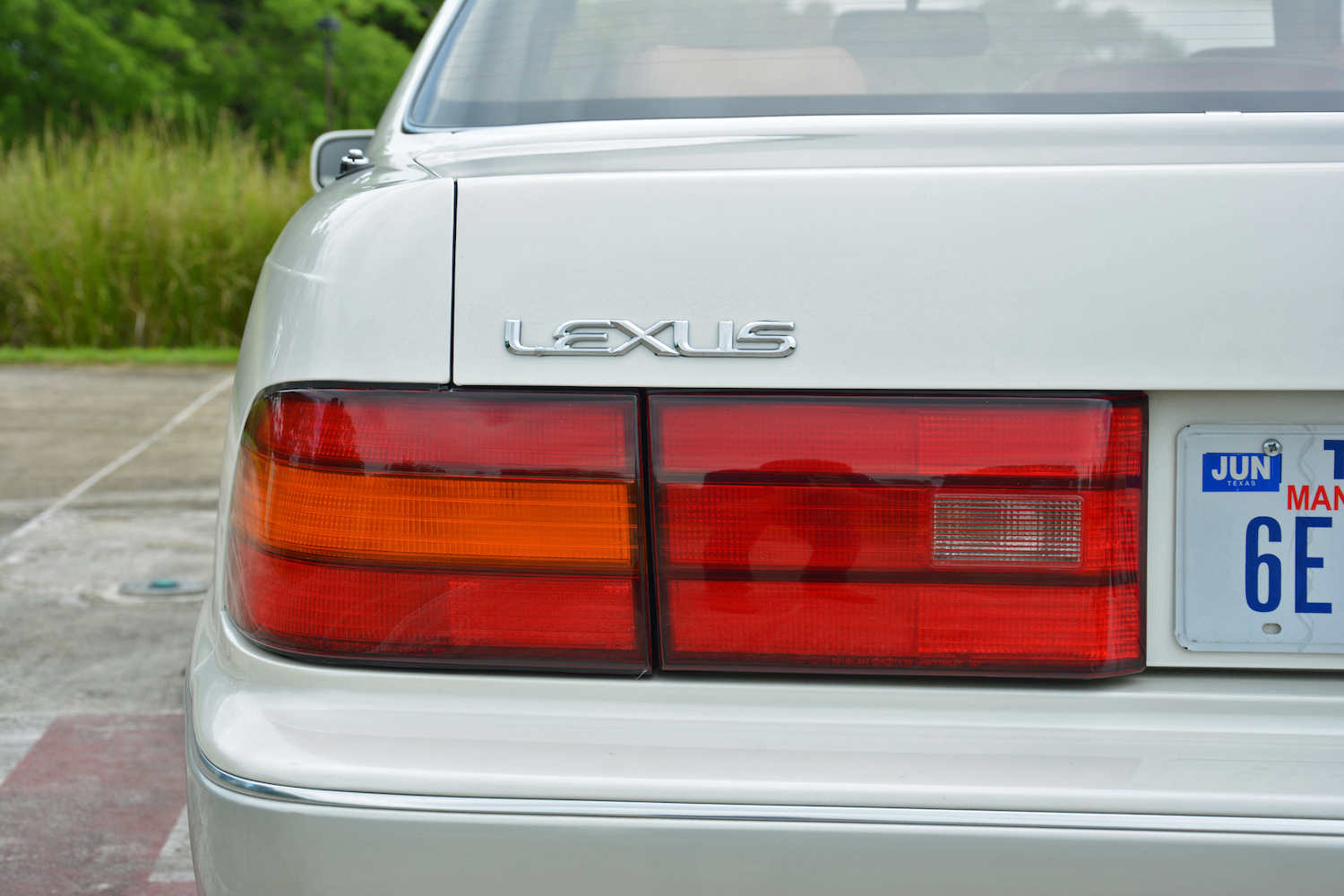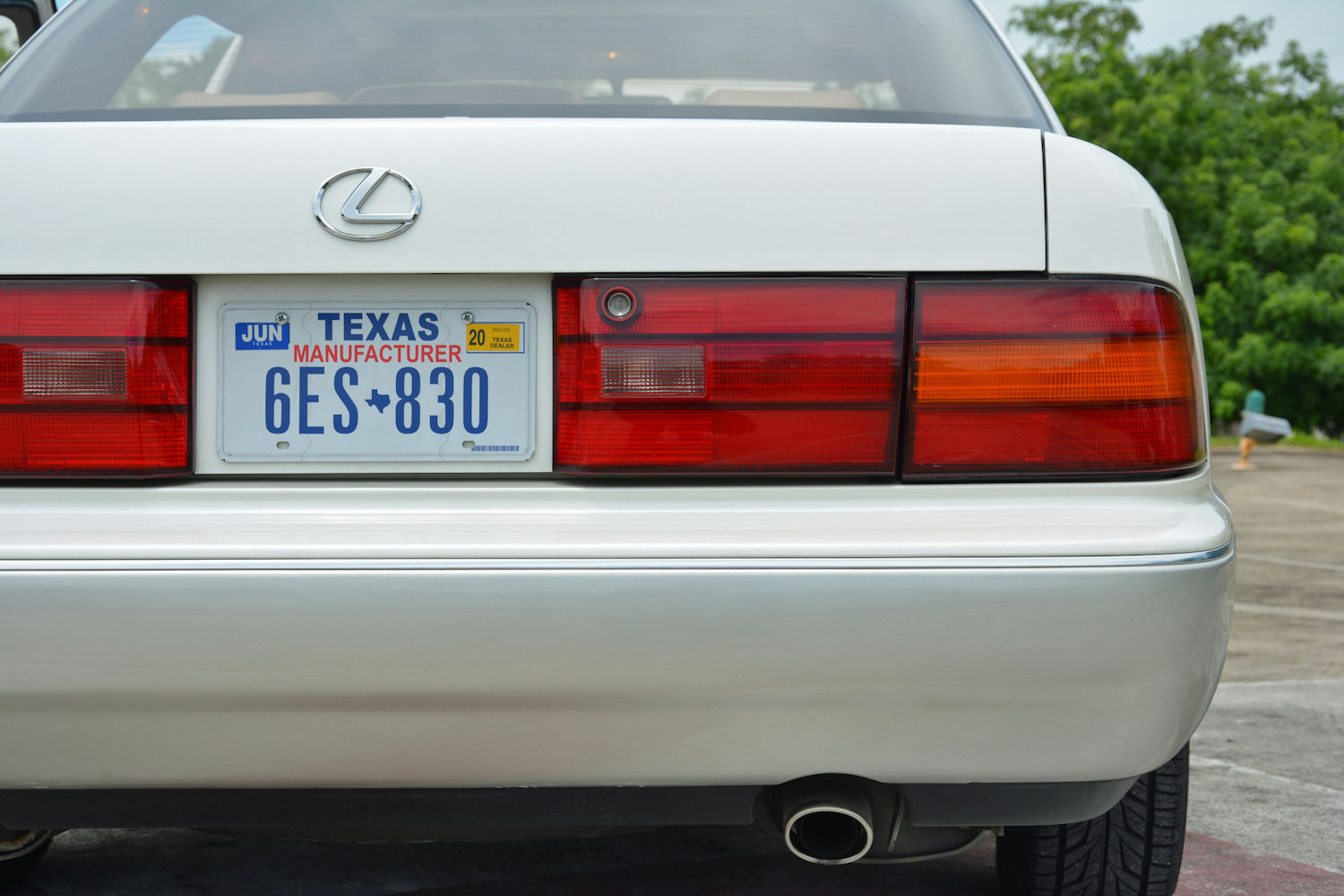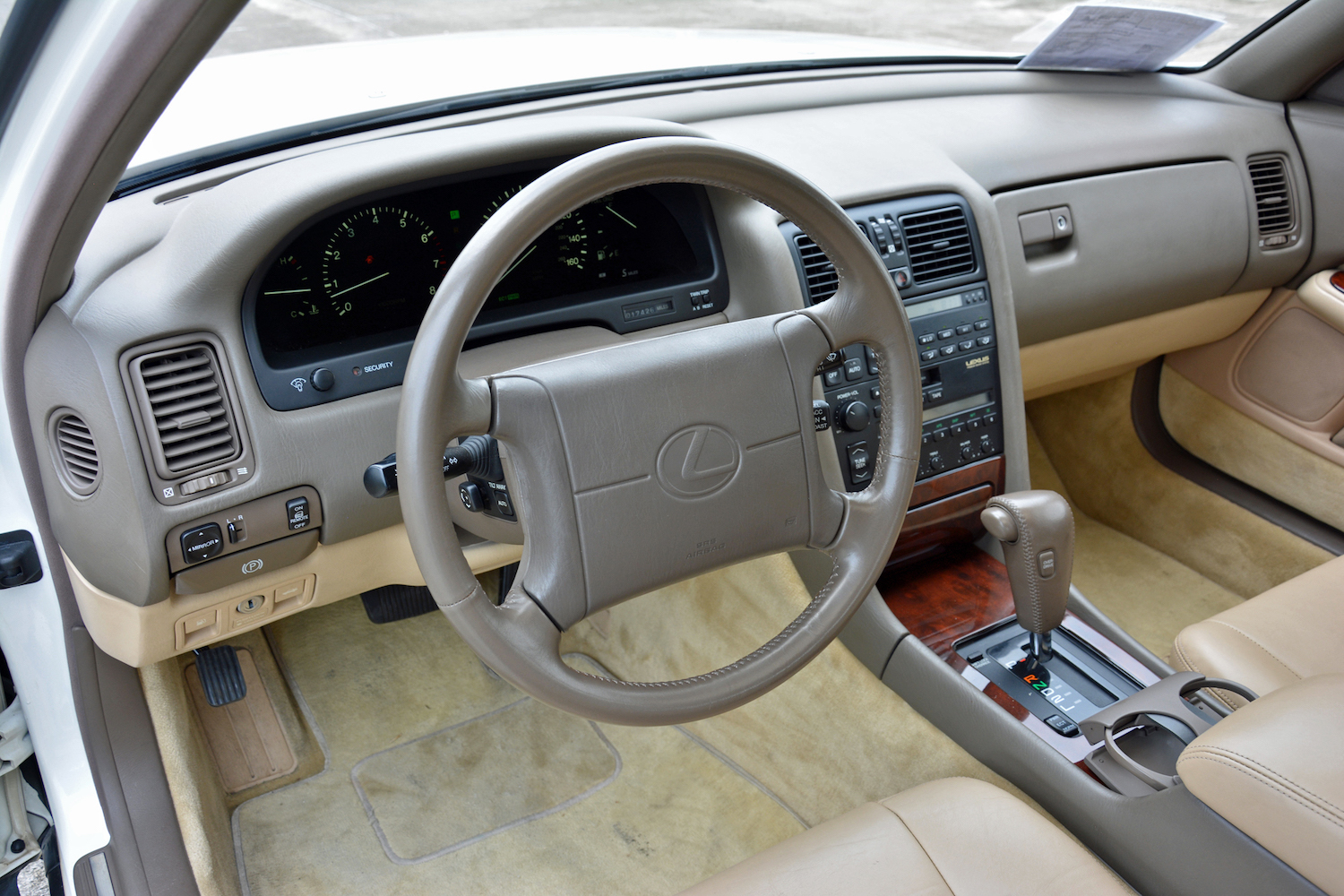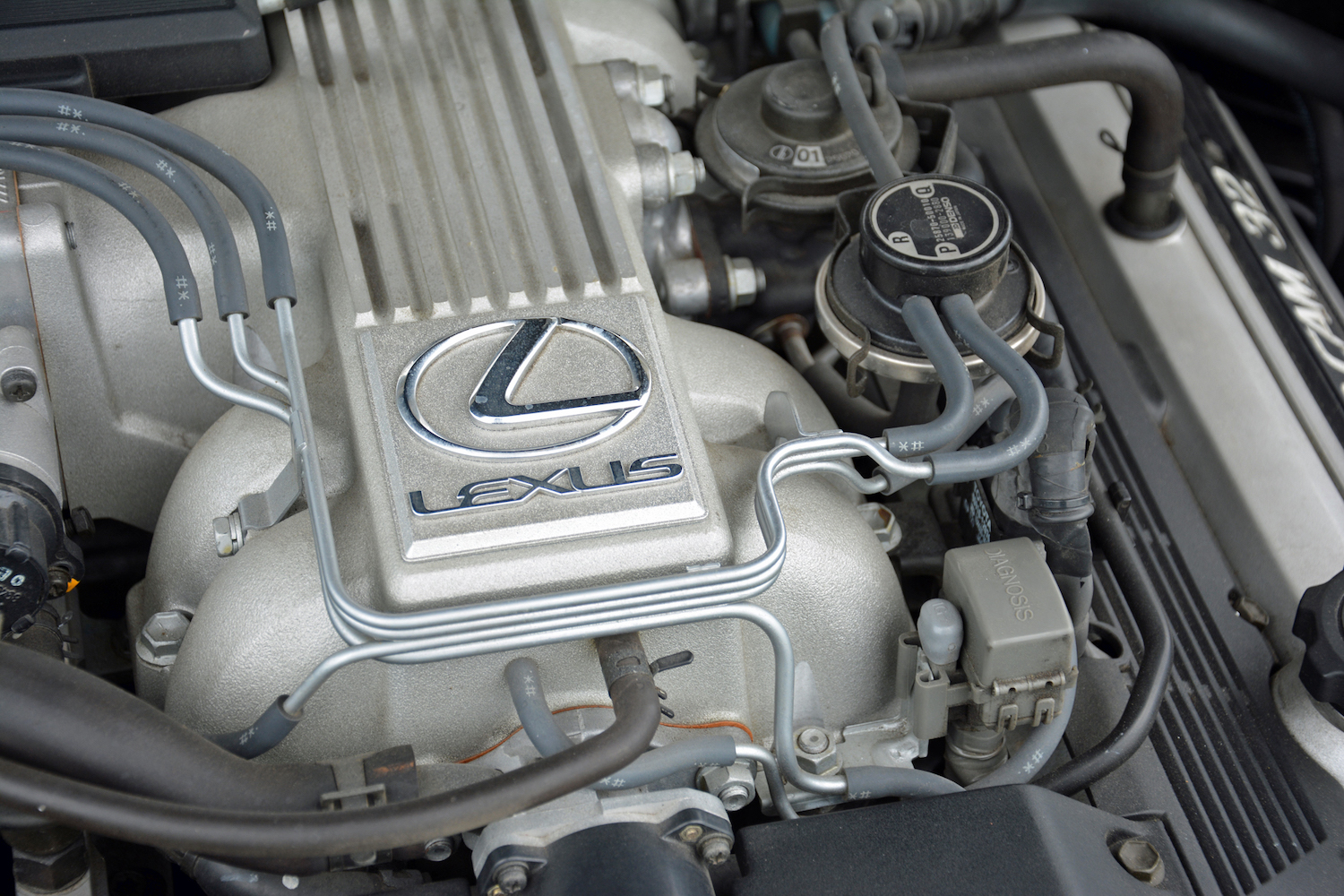Then and now: 1989 Lexus LS400 vs. 2019 Lexus LS 500
Few cars can brag about making the thunderous shockwaves the original Lexus LS sent across the automotive industry. Unveiled at the 1989 Detroit Auto Show after a lengthy, no-expenses-spared development process, it sent executives from rival brands running back to their respective board rooms to completely overhaul their product plans. The LS defined the Lexus identity, and the torch it lit has passed through the hands of four generations of flagship sedans developed to topple the Germans.
Specifications only tell part of the LS story. The best way to gauge how far the nameplate has come over the past three decades is to drive a 1989 LS400 and a 2019 LS 500 back-to-back.
Sitting in the unrestored, 17,000-mile, first-generation Lexus carefully keeps tucked away in its collection feels like stepping into a time machine made for a sultan. I’m surprised there isn’t a compartment for me to deposit my shoes. The cabin immediately exudes timeless serenity. Large glass surfaces allow natural light to flood the space, the dashboard’s layout is refreshingly straightforward, and most of the materials feel top-notch even after 30 years. Fourteen-hundred engineers, 2300 technicians, and 60 designers joined forces to create the original LS, and the immense amount of effort they put into making it a comfortable place to travel remains impressive.
Little details start to appear after a few minutes behind the wheel. The LS is a throwback to an era during which luxury was best delivered in understated fashion. Air vents were just that: air vents. They didn’t need to be hidden, stylized, chromed, and/or backlit. The instrument cluster looks almost Toyota-like.
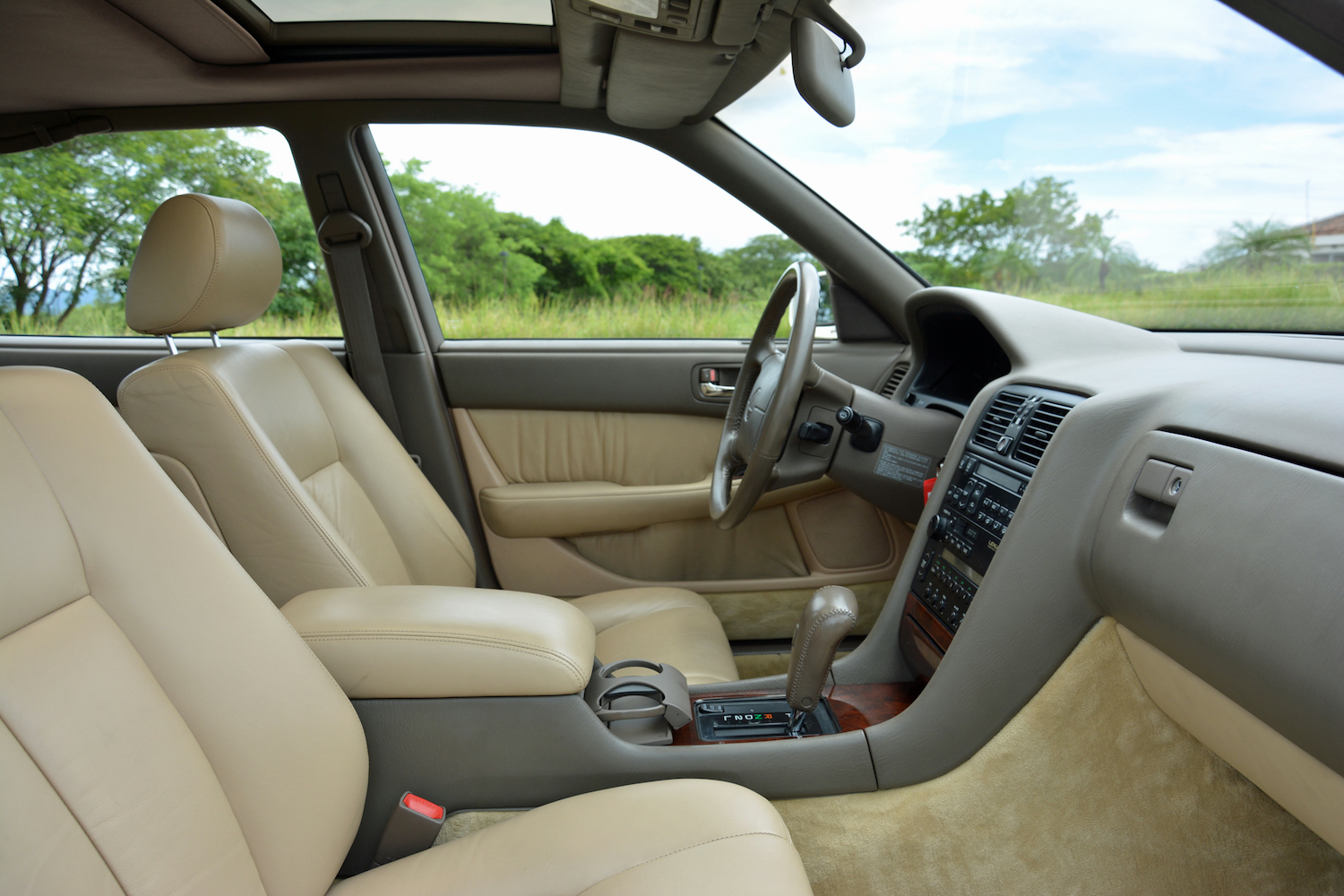
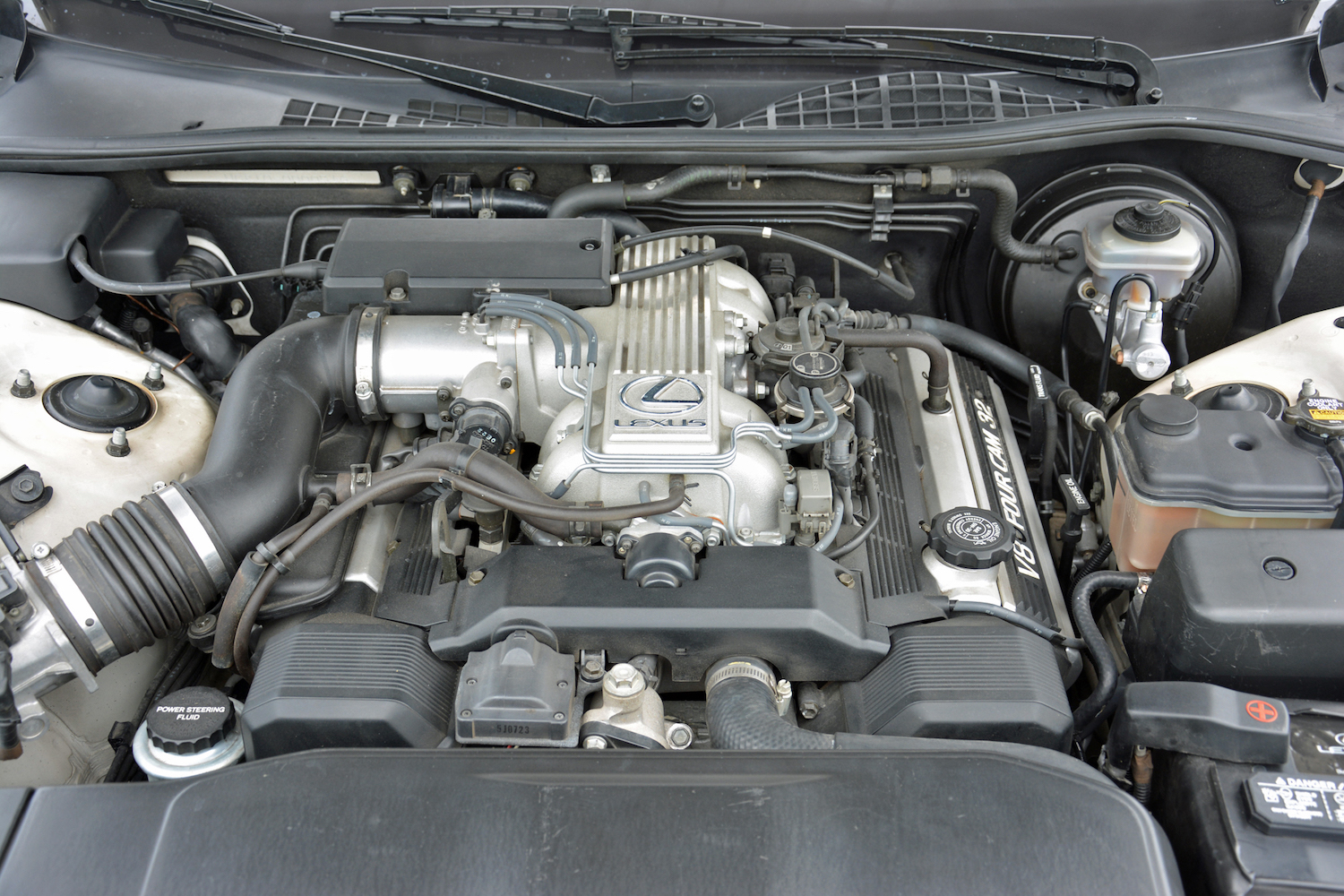
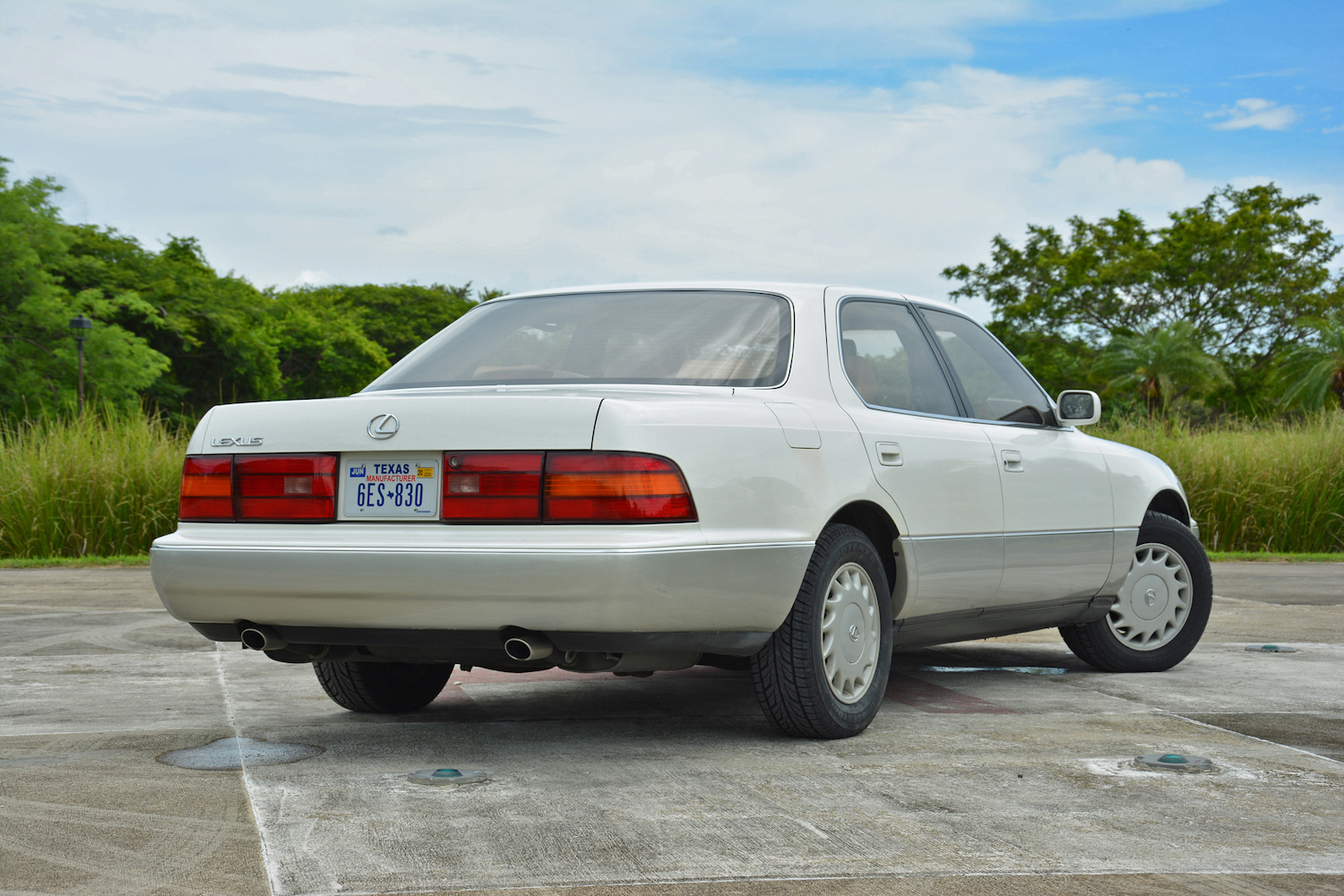
In the 1980s, automakers weren’t skewered by self-appointed tech pundits when they released a car with dozens of buttons on the center console. Engineers had no real alternative because touchscreen technology was still in its infancy and consumers weren’t ready for it; just ask General Motors. Besides, an armada of buttons certified the car was well equipped. More buttons equaled more features.
Lexus released the LS400 with a naturally-aspirated, 4.0-liter V-8 tuned to deliver 250 horsepower at 5300 rpm and 260 pound-feet of torque at 4500 rpm. It powered the rear wheels via a four-speed automatic transmission. The drivetrain still feels peppy, even with the air conditioning on full blast, and the transmission notches off buttery-smooth shifts. It operates with a laid-back attitude that’s completely lost in more modern cars with six, eight, or sometimes 10 forward gears.
Above all, the LS400 is an easy, relaxing car to drive. The pillowy suspension delivers a ride for which Aladdin would trade his magic carpet, and wind noise only begins to enter the cabin at freeway speeds. Light and slow, the steering says a lot about how engineers envisioned the LS. They were clearly aiming for the royalty-tested, dictator-approved comfort of a 1980s Mercedes-Benz, not for the track-bred, enthusiast-oriented performance of a 1980s BMW.
The current, fifth-generation LS released in 2016 manages to simultaneously feel very similar and very different, depending on your vantage point. It has a more extroverted personality than any of its predecessors. Just look at it: its front end is dominated by Z-shaped headlights and a gigantic spindle grille with intricate detailing. Thick pieces of chrome trim bump up its bling-bling quotient. While the original LS was designed to cruise under the radar, this one was penned to make a statement.
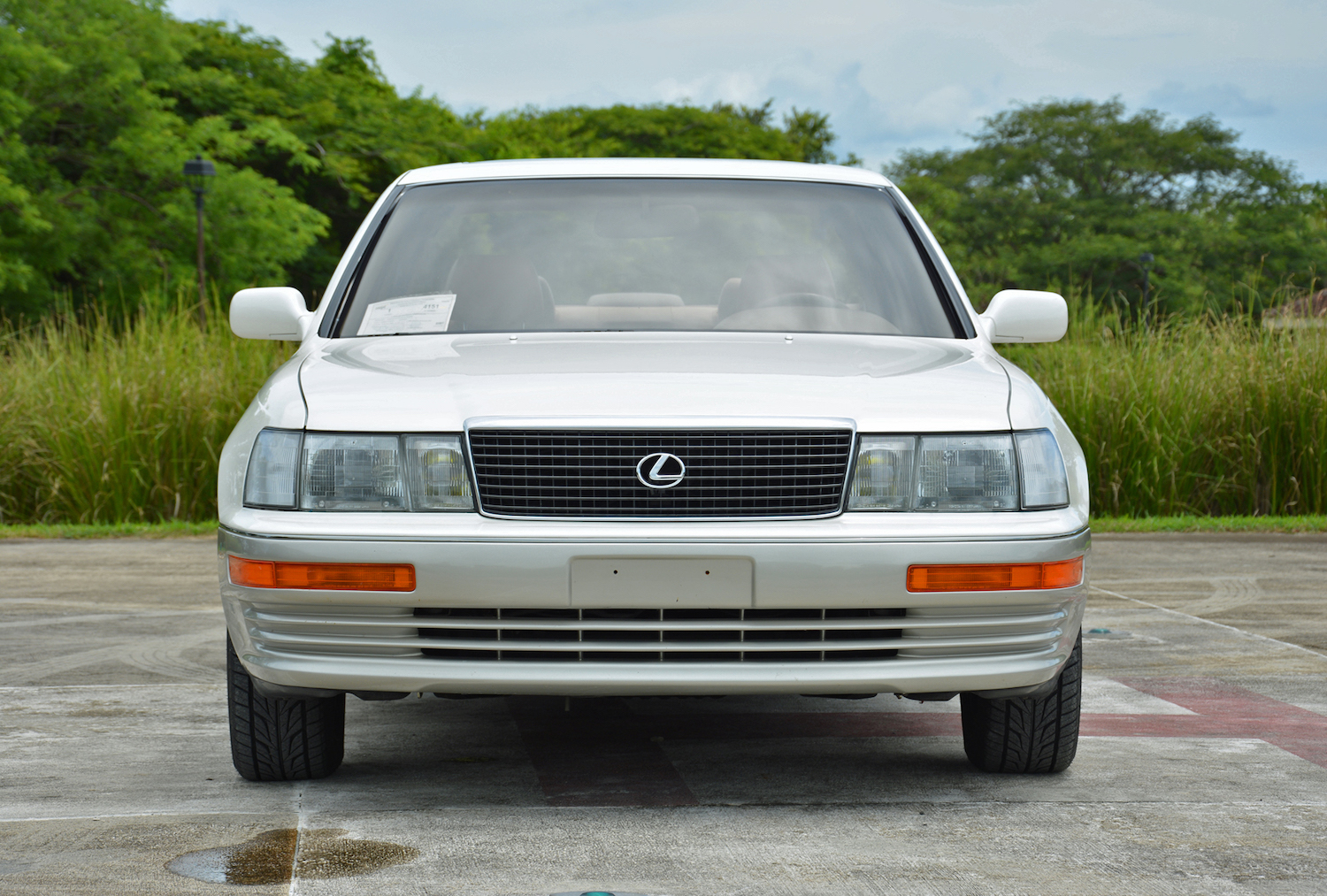

The doors close with a sturdy thump in both versions of the LS but the sound resonates in two very different atmospheres. The 2019 LS 500 wraps itself around the driver. The dashboard, the door panels, and the center console are all much higher than in the LS400. The contemporary sedan doesn’t feel cramped—it’s much too big for that—but it doesn’t feel as airy. It’s a concession Lexus made in the name of design.
The LS 500 also puts more things to look at and to touch in front of the driver than the LS400. In keeping with the exterior, the dashboard design is more assertive; it’s curved, decorated, and digital. Lexus still builds its flagship with top-notch materials, but I’d argue the LS 500 feels more luxurious in 2019 than the LS400 did in 1989.
Since the 400 represented a 4.0-liter V-8 on the original LS, you could reasonably assume 500 denotes a 5.0-liter engine; you’d be wrong. Rampant downsizing chased the V-8 from the specifications sheet. Instead, the entry-level engine is a twin-turbocharged, 3.5-liter V-6 that provides 416 horsepower and 442 pound-feet of torque. Rear-wheel drive and a 10-speed automatic transmission come standard, and Lexus offers all-wheel drive at an extra cost. Next up in the range is a 500h-badged model powered by a gasoline-electric hybrid powertrain that teams a detuned V-6 with two electric motors to place 354 horses at the command of the driver’s right foot. It’s also available in rear- or all-wheel drive configurations.



The six doesn’t sound as sweet as the old eight, but the engine’s character isn’t all that different. While the current LS (inevitably) offers a Sport mode, it’s not a car that likes to be rushed around a corner. The LS 500 is better suited to a smooth, laid-back driving style. Sound familiar?
Still, the cars’ specifications don’t line up, which isn’t surprising given the 30 years of space in between. At 4700 pounds, the 2019 LS weighs about 1000 pounds more than the 1989 model. It’s also much quicker in a straight line; yet it burns less fuel. The two overlap in one important and surprising area: pricing. In 1989, Lexus charged $35,000 for a base LS400, a figure which represents approximately $73,000 when adjusted for inflation. Going on 30 years later, the cheapest LS 500 commands $75,450 (while the Mercedes S-Class starts at $92,245).
All things considered, $75K is a small price to pay for three decades’ worth of progress.
